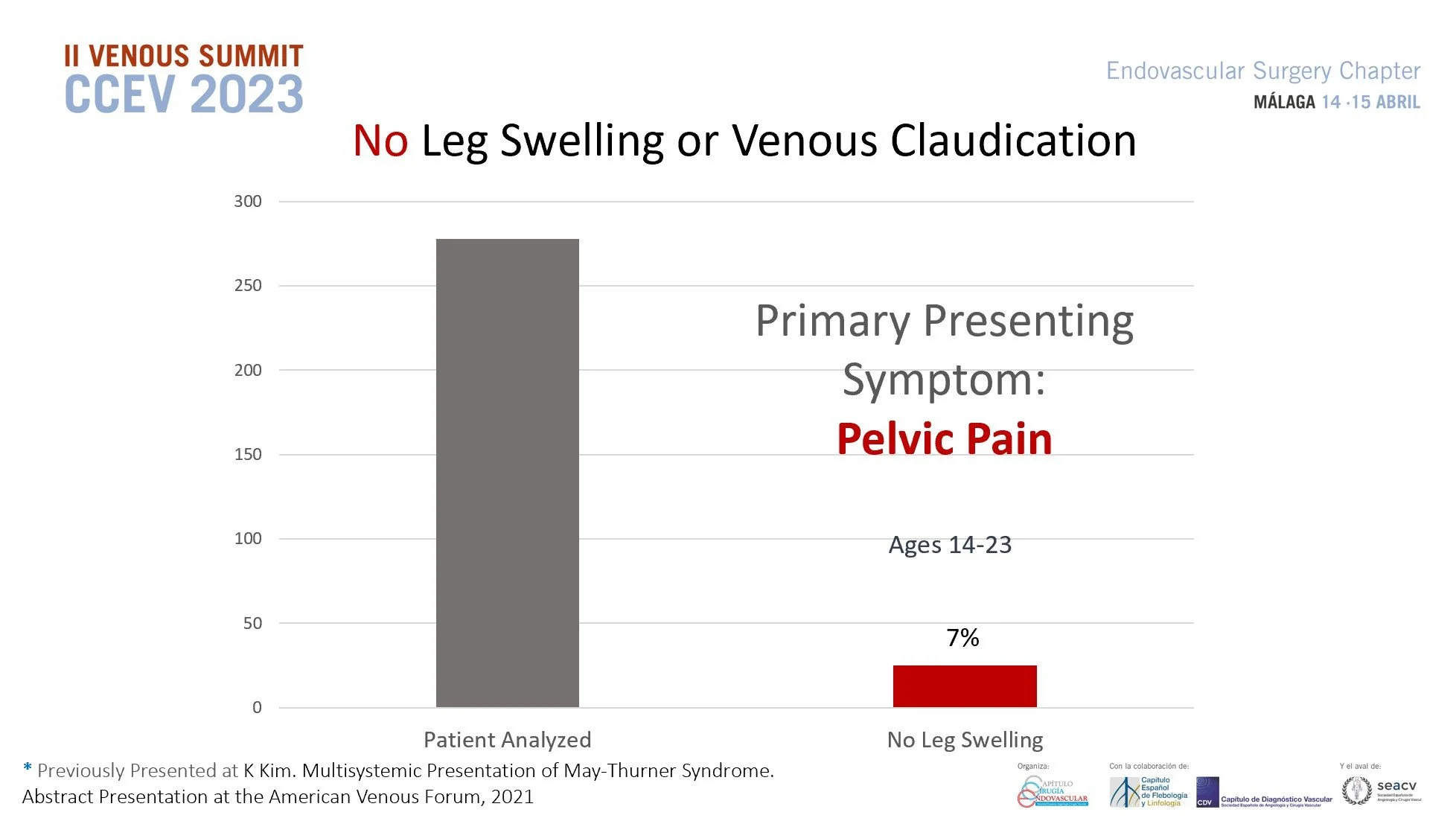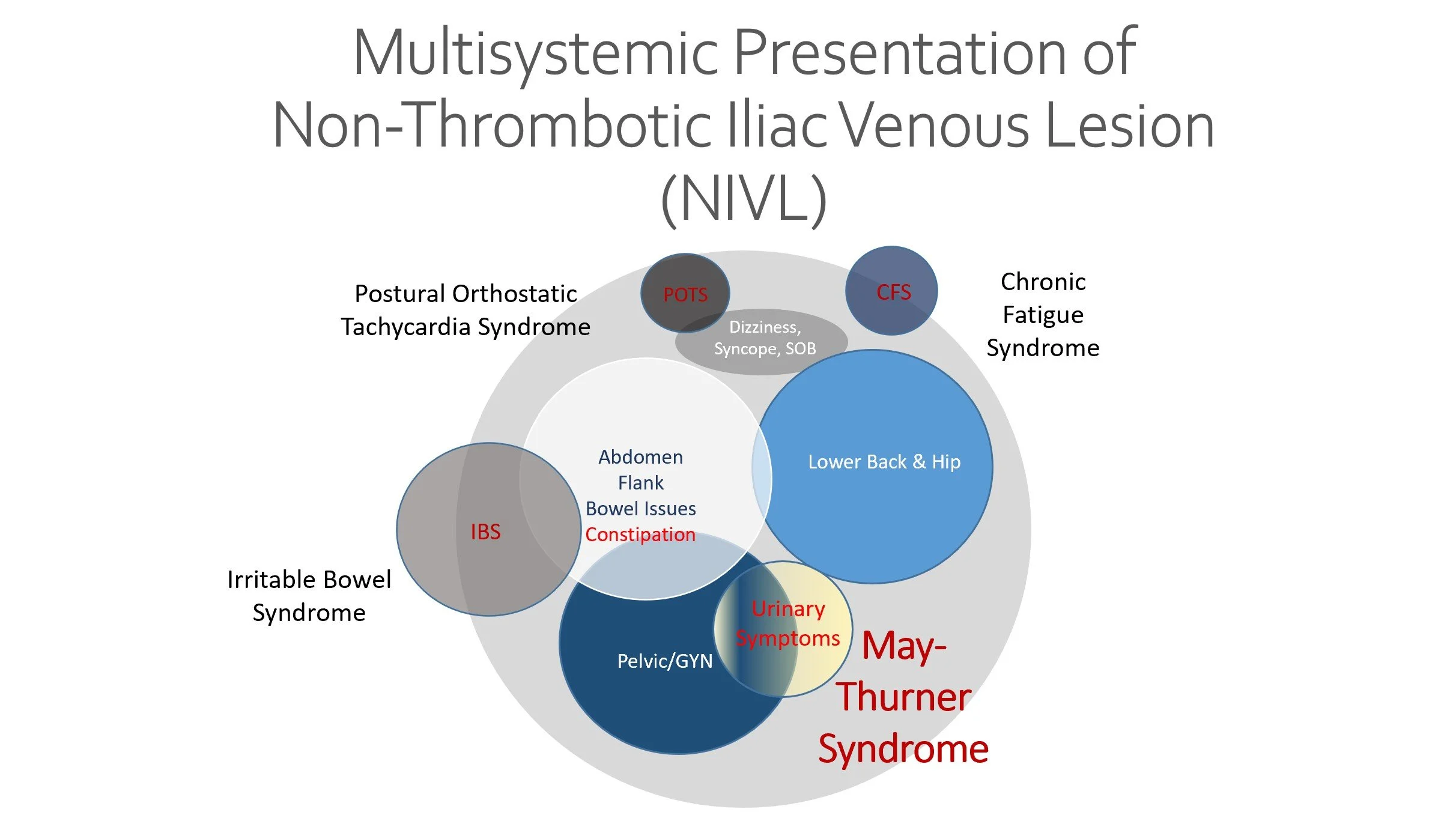May-Thurner Syndrome
May-Thurner Syndrome (MTS) is no longer a rare condition. It’s definition has now broaden from historic description by to include multiple compression points in the pelvis that can cause compression of the iliac veins. While left leg involvement remains most common, both legs can be involved as well as isolated right leg. This is one of the two vascular compression syndromes (the other is Nutcracker Syndrome) that is responsible for Pelvic Venous Insufficiency, more commonly known as Pelvic Congestion Syndrome (PCS).
In young patients, while less common, it’s been our observation that MTS patients can present primarily with PCS without the leg involvement. This occurs due to stagnant outflow from the left internal iliac vein which drains the blood from the pelvis.
While MTS symptoms of leg swelling, pain, and pelvic congestion is now widely known which we have come to call Primary Symptoms, it has been our observation that about 30% of the patients harbor one or more of secondary symptoms as we have defined them.
Secondary Symptoms of MTS range widely involving nearly all body systems. Many patients report improvement with headache, migraines, lower back/hip pain, constipation, hemorrhoids, urinary dysfunction, dysparunia, menstral cramps, numbness and tingling in the leg, chronic fatigue, postural orthostatic tachycardia syndrome (POTS), improvement or resolution of irritable bowel syndrome (IBS), and more. While there are much more common causes of above symptoms, MTS seems to have a role in subset of patients who have been ruled out from the common causes. This finding has been published and presented worldwide by Dr. Kim over the years under the title of “Multisystemic Presentation of May-Thurner Syndrome,” and became the seed to deeper understanding of other venous compression syndromes.
©K.Kim, JVS-VL 2022
©Kurtis Kim
Many faces of May-Thurner Syndrome Venograms Each Presenting with Different Sets of Symptoms
DIAGNOSTIC WORKUP
Ultrasound | CT | MR
Venogram with Intravascular Ultrasound (IVUS) ist the Gold Standard test for MTS.
TREATMENT OPTIONS
Endovascular Stenting is The Treatment of Choice for Most
There are a few Open Reconstruction options for those who have significant systemic metal allergies.



